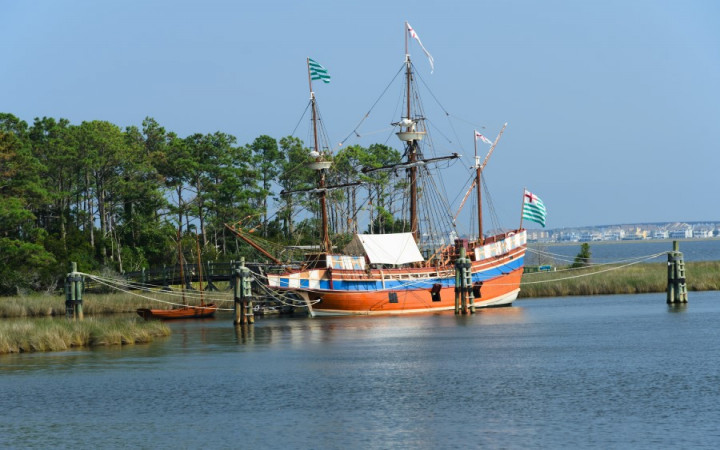It sounds like the plot of the latest science fiction movie or television show. A group of people set out to explore a new land. They arrive on an island and establish a new settlement. Their leader travels back for supplies and returns a few years later only to find the people he left behind have vanished without a trace!
Does this occur in the future on a planet like Mars? Nope! It happened hundreds of years ago in America. This is the basic story of the Lost Colony of Roanoke Island, and it remains one of the great mysteries of American history.
After two previous expeditions to Roanoke, an island off the coast of what is now North Carolina, a group of 117 men, women, and children from England arrived in 1587 to establish a colony in the New World. They found the settlement abandoned and quickly began to rebuild it. They also began to rebuild relations with the Powhatan tribe of Native Americans on nearby Croatoan Island.
The settlers were led by Governor John White, who had been a member of one of the previous expeditions to Roanoke. Although they tried hard to carve out a new life on Roanoke, relations with other Native American tribes were strained, and the colonists remained dependent upon supplies from their native England.
In August 1587, Governor White returned to England to gather additional supplies. Although he hoped to return soon, his ship was enlisted to help fight the powerful Spanish Armada at the request of Queen Elizabeth I. In August 1590 — three years after he had left Roanoke — White returned to find no trace of the colony's houses or its inhabitants.
Amongst the missing colonists were White's wife, daughter, and infant granddaughter, named Virginia Dare (the first English child born in the Americas). White was mystified. What had happened to the settlement and the colonists? Only one clue was left: the word “Croatoan" carved into a wooden post.
Other than this curious clue, no evidence remained of what had happened at Roanoke. White found no sign of bones or carved Maltese crosses, which would've indicated that they had been attacked and killed.
The settlers, over time, became known as the Lost Colony, because they were never heard from again. Over the years, historians have developed several theories about what might have happened to the Lost Colony.
Some historians believe the carved word “Croatoan" indicates that the colonists willingly moved to Croatoan Island to join the Powhatans for protection and supplies. Unfortunately, no serious searches for the Lost Colony occurred until after Jamestown was settled in 1607.
Others believe the colonists met a violent fate at the hands of warring Native American tribes or even the Spanish who may have traveled north from Florida to attack the colony. Still others believe they may have fallen victim to diseases in the New World. Some have even suggested that the colonists tried to sail back to England on their own and got lost at sea.
Governor White's letters reveal that he believed the colonists simply picked up and moved 50 miles or more inland into the North Carolina forests. Some historians believe this is possible, although there is no evidence of what ever became of them.
Early Jamestown settlers who searched for the Lost Colony reported speaking with Native Americans who knew of tribes who could read English and dressed like Europeans. There were also reports of settlements to the south with houses similar to those at Roanoke.
These reports led many to believe that the Roanoke colonists simply joined friendly Native American tribes. Over subsequent generations and marriages between colonists and Native Americans, a new tribe — the Lumbee tribe native to North Carolina — may have been formed.
Although theories about the Lost Colony abound, there is little hard evidence to support any particular theory. That's why the Lost Colony remains one of the great unsolved mysteries of American history.




